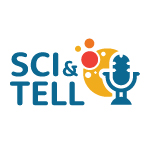Sci & Tell in the Classroom
Are you a teacher, professor, and/or educator who's interested in using podcasts, news stories, and other AGU resources to teach in your classroom? Using these filters to learn about folks in different careers, from diverse backgrounds, and see/hear how their journeys connect with other AGU resources!
Connecting Science & Society
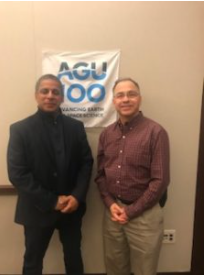
Priya Nanjappa’s job is to use her science background to help develop policies in Colorado. We talked about the importance of science policy with Roger Pulwarty and Michael Hayes on a previous Sci & Tell episode.
Episode: Priya Nanjappa
What Tree Rings Can Tell Us About the U.S. Civil War
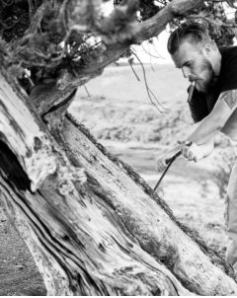
Priya Nanjappa is an expert in wildlife and environmental sciences (at least we think so!). Curious about what you can study in those fields? Check out this Third Pod from the Sun episode about what we can learn from tree rings!
Episode: Priya Nanjappa
Night of the Killer Smog

Priya Nanjappa’s job is to use her wildlife and environmental expertise to help develop policies in Colorado. One of the first environmental laws enacted in the US is the Clean Air Act of 1970. We talked about why this law was enacted on Third Pod from the Sun – check it out!
Episode: Priya Nanjappa
Footprints from an Ancient World
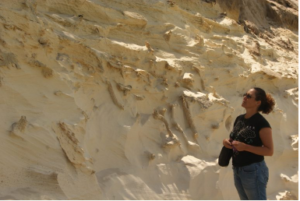 Priya Nanjappa is an expert in wildlife and environmental sciences (at least we think so!). Curious about what sorts of things you can study in those fields? Check out this Third Pod from the Sun episode with ichnologist Renata Netto.
Priya Nanjappa is an expert in wildlife and environmental sciences (at least we think so!). Curious about what sorts of things you can study in those fields? Check out this Third Pod from the Sun episode with ichnologist Renata Netto.Episode: Priya Nanjappa
Standing Up for Science During an Epidemic
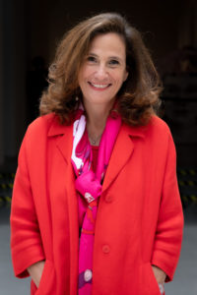
Priya Nanjappa’s job is to use her wildlife and environmental expertise to help develop policies in Colorado. Recently we talked with Ilaria Capua on Third Pod from the Sun, a virologist who also used her expertise to advise policies in Italy- until it went horribly wrong.
Episode: Priya Nanjappa
The Changing Climate’s Snowball Effect
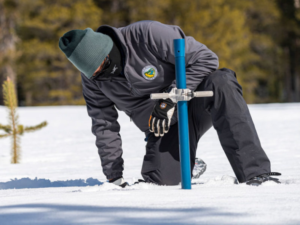
Priya Nanjappa’s job is to use her wildlife and environmental expertise to help develop policies in Colorado. We’ve been seeing the dangerous affects of climate change over the past few years- can policies help mitigate them? Read more in this Eos article:
Episode: Priya Nanjappa
How the “Best Accidental Climate Treaty” Stopped Runaway Climate Change
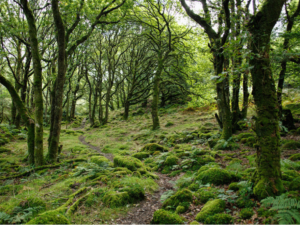
Priya Nanjappa’s job is to use her wildlife and environmental expertise to help develop policies in Colorado. Check out this Eos article to see how effective science policies are- even accidentally:
Episode: Priya Nanjappa
Forecast: 8 Million Energy Jobs Created by Meeting Paris Agreement
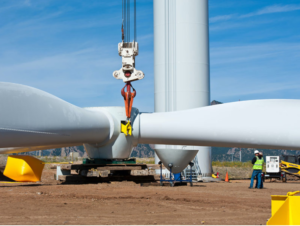
Priya Nanjappa’s job is to use her wildlife and environmental expertise to help develop policies in Colorado. Science policies don’t just help save the Earth- they create jobs:
Episode: Priya Nanjappa
Tracking Sustainability Goals with Creative Data Sources

Priya Nanjappa’s job is to use her wildlife and environmental expertise to help develop policies in Colorado. Wondering how that works? Read this Eos article about how nontraditional data sources help develop science policies:
Episode: Priya Nanjappa
Specifically Tailored Action Plans Combat Heat Waves in India
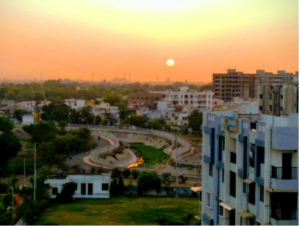
Priya Nanjappa’s job is to use her wildlife and environmental expertise to help develop policies in Colorado. Many recent science policies are developed to help combat climate change. For example, Ahmedabad, a city in Gujarat, India, is the first city in the country to create a heat action plan to combat frequent heat waves:
Episode: Priya Nanjappa
Bill Would Create a Wildlife Corridors System to Protect Species
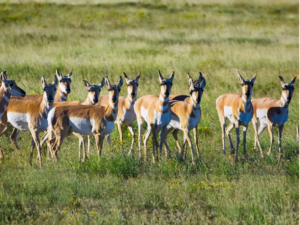
Priya Nanjappa’s job is to use her wildlife and environmental expertise to help develop policies in Colorado. An example of policies developing wildlife- the creation of wildlife corridors:
Episode: Priya Nanjappa
Birds Sang a New Song During the Pandemic
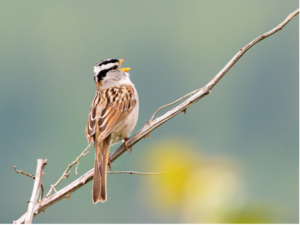
Priya Nanjappa’s love for birdwatching influenced her career journey into studying wildlife and environment. A cool thing we learned about birds this year? Some of them changed their songs during the pandemic:
Episode: Priya Nanjappa
Three–Dimensional Scans Illuminate Wildlife Environments
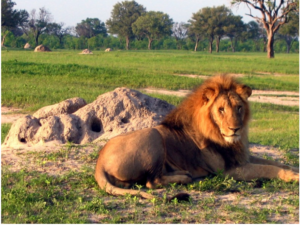
Priya Nanjappa is an expert in wildlife and environment- at least we think so! What do wildlife scientists study? Here’s an @AGU_Eos article from 2015 about using imaging technology to study how wildlife interacts with its environment:
Episode: Priya Nanjappa
Understanding Our Environment Requires an Indigenous Worldview
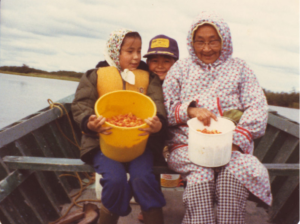
Priya Nanjappa is an expert in wildlife and environment- at least we think so! There’s no understanding the environment without indigenous knowledge. @AGU_Eos goes in depth:
Episode: Priya Nanjappa
Reimagining STEM Workforce Development as a Braided River
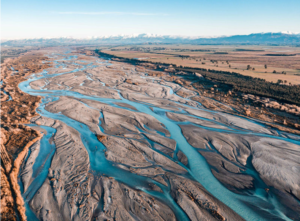
Like most people, Priya Nanjappa’s career path was anything but straightforward. It’s more useful to look at STEM career paths as a briaded river, instead of a line. Read more in @AGU_Eos:
Episode: Priya Nanjappa
Building Resilience in Rural America
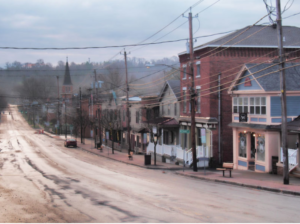
Paula Buchanan’s job involves helping the public prepare for natural disasters. Rural communities are disproportionally affected by natural hazards, but there are ways to change that. Read more in @AGU_Eos:
Episode: Paula Buchanan
Satellites Support Disaster Response to Storm-Driven Landslides
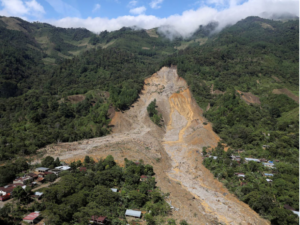
Paula Buchanan’s job involves helping the public prepare for natural disasters. An effective tool to predicting landslide hazards- satellites! Read more in @AGU_Eos:
Episode: Paula Buchanan
Is Your Home at Risk of Experiencing a Natural Disaster?
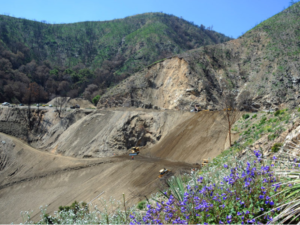
Paula Buchanan’s job involves helping the public prepare for natural disasters. How vulnerable are you to natural hazards? Check out this @AGU_Eos research spotlight on scientists who mapped hazard spots across the country:
Episode: Paula Buchanan
Thriving Earth Exchange

Paula Buchanan makes sure her research involves and benefits the communities she’s working in. At AGU, we call this community science, and we created the Thriving Earth Exchange to support those projects. Learn more about it and all the cool projects its funded here:
Episode: Paula Buchanan
Voices for Science
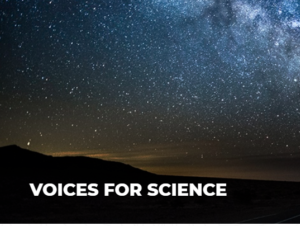
On top of all the amazing things Paula Buchanan is doing, she’s a Voices for Science advocate with AGU! Learn more about the program here:
Episode: Paula Buchanan
Careers in Community Science
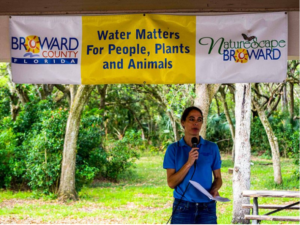
Paula Buchanan makes sure her research involves and benefits the communities she’s working in. At AGU, we call this community science. Read more about it in @AGU_Eos:
Episode: Paula Buchanan
Amateur Radio Operators Help Fill Earthquake Donut Holes
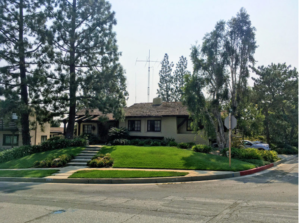
Paula Buchanan’s job involves helping the public prepare for natural disasters. When natural hazards like hurricanes and earthquakes knock out communications lines, amateur radio operators have consistently come to the rescue. Read more in @AGU_Eos:
Episode: Paula Buchanan
Assessing Social Equity in Disasters
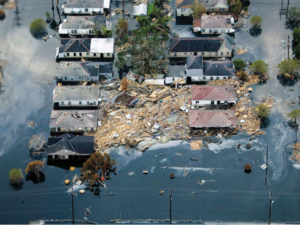
Paula Buchanan’s job involves helping the public prepare for natural disasters. Disadvantaged communities are disproportionally affected by natural hazards, and new research is helping measure just how much.
Episode: Paula Buchanan
Natural Hazards Have Unnatural Impacts—What More Can Science Do?

Paula Buchanan’s job involves helping the public prepare for natural disasters. Disadvantaged communities are disproportionally affected by natural hazards. Is there anything science can do to help?
Episode: Paula Buchanan
Climate Change Is Making India’s West Coast More Vulnerable to Cyclones
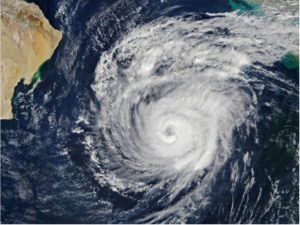
Paula Buchanan’s job involves helping the public prepare for natural disasters-particularly hurricanes (or cyclones). Climate change is making cyclones more dangerous, and one area that is particularly vulnerable this is India’s West Coast. Read more in @AGU_Eos:
Episode: Paula Buchanan
Volcano Disaster Prepping
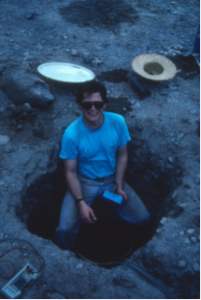
Paula Buchanan’s job involves helping the public prepare for natural disasters. John Ewert helps people prepare for volcano eruptions- at least, he did in this #ThirdPod ep!
Episode: Paula Buchanan
Special Release: Managing Emergencies in a Water World
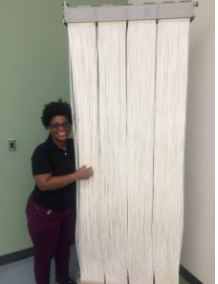
Want more Paula Buchanan after listening to her #SciAndTell ep? We interviewed her on #ThirdPod in 2019- check it out!
Episode: Paula Buchanan
Special Release: Tribes, Trails, & Tailings
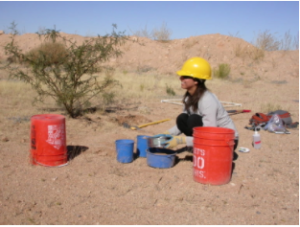
Science isn’t more important than the communities where you are researching. Paula Buchanan is always conscious of helping the communities that are affected by what she studies. And on a previous #ThirdPod ep, we spoke to indigenous scientists about working in their communities.
Episode: Paula Buchanan
Standing Up for Science During an Epidemic

Paula Buchanan helps the public understand the science behind natural disasters. On a recent Third Pod episode, we talked to Ilaria Capua who helped the public dispel rumors about COVID.
Episode: Paula Buchanan
3rd Pod Summer: The Johnstown Flood
Paula Buchanan’s job involves helping the public prepare for natural disasters. The Johnstown Flood was one of the US’s most devastating natural disasters. We discussed it in depth on #ThirdPod:
Episode: Paula Buchanan
Martian Meteorites Shed Light on Solar System’s Early Dynamics

Dante Lauretta is a professor of planetary sciences at the University of Arizona. Where do meteorites come from? Well, a lot of them come from Mars…:
Episode: Dante Lauretta
Scientists, Explorers Keen to Locate Water-Bearing Asteroids
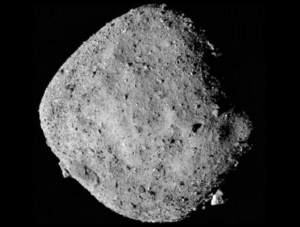
Dante Lauretta is principal investigator on NASA”s OSIRIS-REx mission, which is bringing back samples from Asteroid Bennu. Researchers on the mission are keen to find asteroids containing water:
Episode: Dante Lauretta
A Remarkably Constant History of Meteorite Strikes
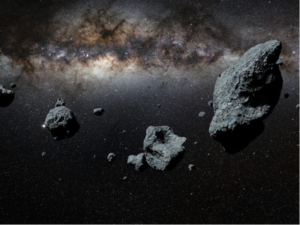
Dante Lauretta is a professor of planetary sciences at the University of Arizona. This Eos article talks about how scientists have been able to trace Earth’s history of meteorite impacts from analyzing sea sediments:
Episode: Dante Lauretta
Asteroid Bennu Is Rotating Faster Over Time

Dante Lauretta is principal investigator on NASA”s OSIRIS-REx mission, which is bringing back samples from Asteroid Bennu. Here’s a press release about Bennu from 2019 in Eos about its increasing speed:
Episode: Dante Lauretta
James Webb Space Telescope
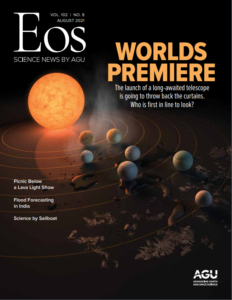
Dante Lauretta is principal investigator on NASA’s OSIRIS-REx mission. Eos’s August 2021 issue covered another upcoming NASA mission, the James Webb Space Telescope:
Episode: Dante Lauretta
Glassy Nodules Pinpoint a Meteorite Impact
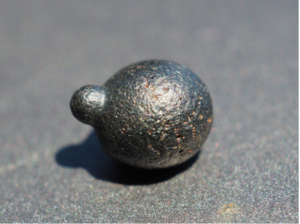
Dante Lauretta is waiting to get samples from Asteroid Bennu as part of NASA’s OSIRIS-REx mission. In other asteroid news, scientists think a meteorite struck Chile’s Atacama Desert a long time ago- read why in Eos:
Episode: Dante Lauretta
Between a Varnished Rock and a Hard Place
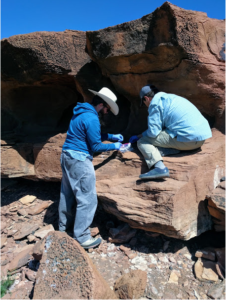
Dante Lauretta is principal investigator on NASA’s OSIRIS-REx mission. How do you study space when you’re on Earth? Check out this Third Pod episode about how rocks in New Mexico can help us understand Mars:
Episode: Dante Lauretta
Exploring Planetary Breadcrumbs One Asteroid at a Time
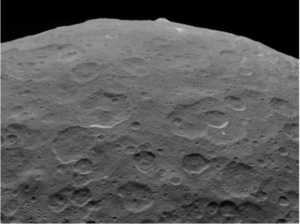
Dante Lauretta is currently working on bringing back samples from Asteroid Bennu through NASA’s OSIRIS-REx mission. Read about the different asteroid missions happening at the moment, including OSIRIS-REx, in Eos:
Episode: Dante Lauretta
Ejecta Discovered Near Site of Ancient Meteorite Impact
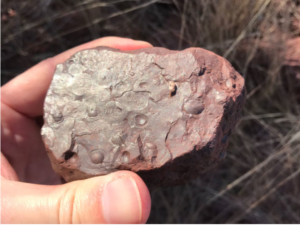
Dante Lauretta is currently working on getting samples back from Asteroid Bennu. Back on Earth, researchers in South Africa recently found the first signs of ejecta from a massive meteorite impact.
Episode: Dante Lauretta
Lori Glaze on Nudging Asteroids
Dante Lauretta and Lori Glaze both studied asteroids at NASA. Check out Lori’s Sci and Tell episode here:
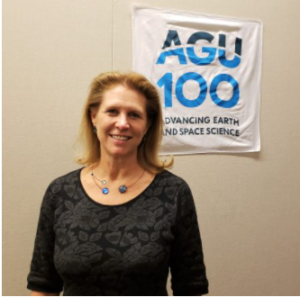
Episode: Dante Lauretta
Mission to Venus Could Help Solve an Atmospheric Mystery
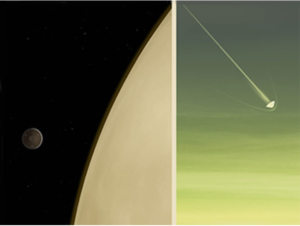
Dante Lauretta is principal investigator on NASA’s OSIRIS-REx mission. In June, NASA announced a new mission to Venus, the DAVINCI+. Eos wrote about what we could learn from it in this article:
Episode: Dante Lauretta
Up Close with an Active Asteroid
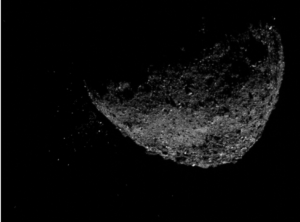
Dante Lauretta is principal investigator for NASA’s OSIRIS-REx mission, which focuses on studying Asteroid Bennu. Dante and his colleagues gave us an in depth look at Asteroid Bennu in this Eos article:
Episode: Dante Lauretta
Earthly Lava Tubes May Offer Insights into Extraterrestrial Life
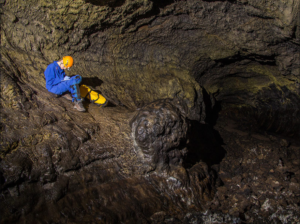
Dante Lauretta’s first job at NASA was to search for extraterrestrial life- how cool is that?! This recent Eos article spotlights research done on Earth that gives us insight into potential life on Mars!
Episode: Dante Lauretta
Final Frontier? The Evolution of Planetary Science Missions
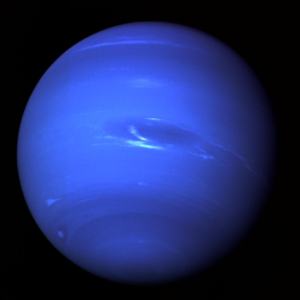
Dante Lauretta has been working on the planetary mission OSIRIS-REx since 2004! Curious about other NASA planetary science missions? Check out this Third Pod episode with Fran Benegal:
Episode: Dante Lauretta
An Asteroid “Double Disaster” Struck Germany in the Miocene
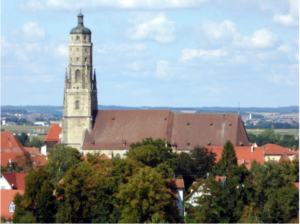 Dante Lauretta is excited to be analyzing samples from Asteroid Bennu in 2 years! More recently, some scientists studying ground samples in Germany learned some cool stuff about 2 asteroids:
Dante Lauretta is excited to be analyzing samples from Asteroid Bennu in 2 years! More recently, some scientists studying ground samples in Germany learned some cool stuff about 2 asteroids:Episode: Dante Lauretta
Relating Seismicity and Volcano Eruptions
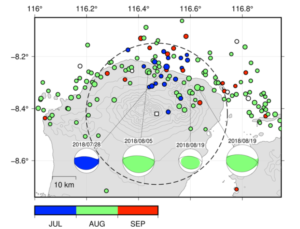
Melissa Scruggs is currently earning her Ph.D. in volcanology.
We know that earthquakes tend to coincide with volcanic eruptions, so what if we could use earthquakes to remotely predict the eruptions? This Eos article explains:
Episode: Melissa Scruggs
Observing a Galápagos Volcano from Buildup to Eruption
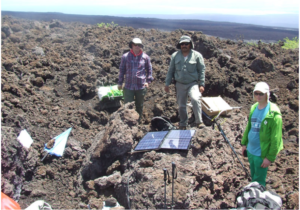
Melissa Scruggs is currently earning her PhD in volcanology.
Have you ever heard of the volcanoes in the Galapagos? Check out this Eos article about what scientists have learned after studying one for thirteen years:
Episode: Melissa Scruggs
Gunslingers of the Sea
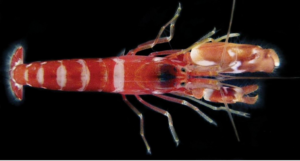
Prosanta Chakrabarty studies ichthyology, specifically fishes & evolution. But we don’t think he ever looked into one of the loudest animals in the ocean.
What if we told you that that animal is… a shrimp? Check out this Third Pod episode w/Joe Haxel to learn more:
Episode: Prosanta Chakrabarty
Ancient Start of Animal Evolution Wasn’t Delayed by Low Oxygen
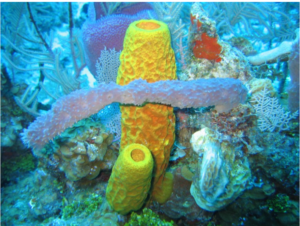
Prosanta Chakrabarty studies ichthyology, specifically fishes & evolution.
For a long time, scientists believed that low oxygen on Earth stagnated evolution. But that might not be true…:
Episode: Prosanta Chakrabarty
Polluted Water Everywhere, and Not a Drop to Drink
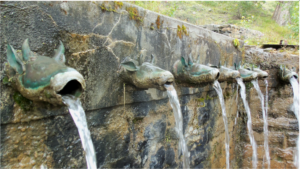
Saleh Ahmed researches climate change in coastal Bangladesh and India, helping to ensure safe conditions for everyone.
In a previous Third Pod episode, we talked to Chris Scott, who is working on making sure everyone has access to clean water:
Episode: Saleh Ahmed
Chasing Narwhals, Unicorns of the Sea
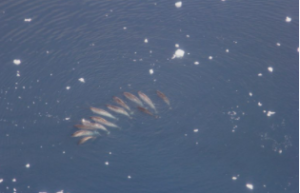
Prosanta Chakrabarty studies ichthyology, specifically fishes & evolution. But we don’t think he ever looked into unicorns (of the sea, that is).
Part of biologist Kristin Laidre’s job is to track down narwhals – not a bad gig.
We talked to her about her job on Third Pod:Episode: Prosanta Chakrabarty
Meet NASA’s Earth Science Division Director
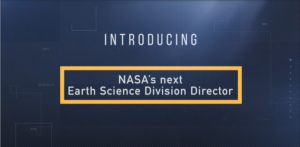
Want to know more about what Karen St. Germain does in her role as Director of Earth Sciences at NASA? Check out this video about her on NASA’s YouTube channel!
Episode: Karen St. Germain
Satellite Recon
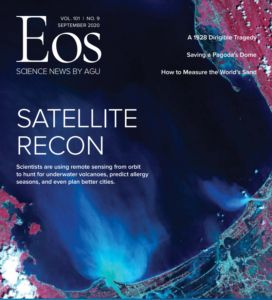
As Director of the Earth Sciences division at NASA, Karen St. Germain oversees lots of satellites that collect data to help us better understand the Earth. The September 2020 issue of Eos highlights some of these projects.
Episode: Karen St. Germain
Can Satellites Fill Gaps in Agricultural Water Monitoring?
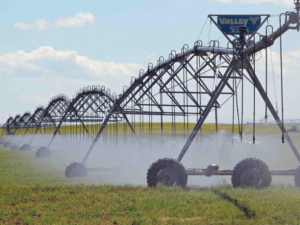
The Earth Sciences division at NASA, which Karen St. Germain is the director of, works on groundbreaking research in Earth Science using satellites. One question scientists have been asking is whether satellites can help us monitor water usage- but research suggests that it might not be effective. David Shultz explains in this Eos article.
Episode: Karen St. Germain
Satellite Captures Detaching Iceberg in Near-Real TIme
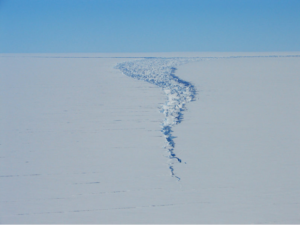
In her Sci & Tell episode, Karen St. Germain explains that one of the main roles of the Earth Sciences department at NASA is to use satellites to study the Earth. This Eos article talks about one of those satellites, which captured an iceberg in Antarctica detatching in real time.
Episode: Karen St. Germain
Uncovering the Ozone Hole
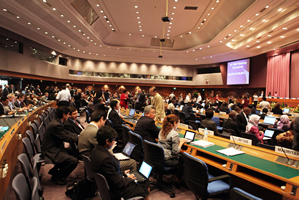
NASA doesn’t just study space- just ask Karen St. Germain, the Director of Earth Sciences at NASA. If you’re curious about what sort of things the Earth Sciences department is working on, check out this Third Pod episode where we interview two NASA scientists studying the ozone layer.
Episode: Karen St. Germain
Between a Varnished Rock and a Hard Place

Karen St. Germain works on a lot of cool projects as the Director of Earth Sciences at NASA. Check out this Third Pod episode to see what some other scientists in the field are working on!
Episode: Karen St. Germain
Reimagining STEM Workforce Development as a Braided River

In her Sci & Tell episode, Karen St. Germain talks about the importance of being able to switch gears throughout your career. This Eos article similarly suggests that we stop insisting that there’s only one path to a STEM career, and instead see how each individual’s unique experiences can lead them to their next opportunity.
Episode: Karen St. Germain
Using Satellite Data to Map Air Pollution and Improve Health
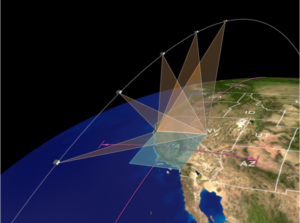
We interviewed Karen St. Germain on the Sci & Tell Podcast to learn about her journey to becoming the Director of Earth Sciences at NASA. Here’s a cool project her department is working on right now!
Episode: Karen St. Germain
Five Things Spy Satellites Have Taught Us About Earth
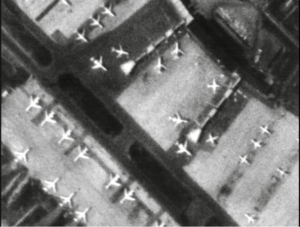
As Director of the Earth Sciences division at NASA, Karen St. Germain oversees lots of satellites that collect data to help us better understand the Earth. What kind of data? Check out this Eos article to see what satellites have helped us learn about the Earth.
Episode: Karen St. Germain
Six Ways Satellites Tracked COVID-19
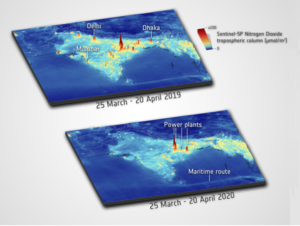
As Director of the Earth Sciences division at NASA, Karen St. Germain oversees lots of satellites that collect data to help us better understand the Earth. Recently, the satellites have been particularly useful in showing us the impact of COVID-19 on the planet. Here are 6 things we learned from satellites.
Episode: Karen St. Germain
Satellite Sleuthing Detects Underwater Eruptions
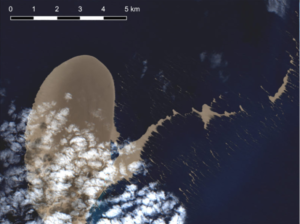
As Director of the Earth Sciences division at NASA, Karen St. Germain oversees lots of satellites that collect data to help us better understand the Earth. There are lots of scientists around the world who study Earth Science using data from satellites. This Eos article highlights a few scientists using satellites to learn more about underwater volcanoes in the South Pacific.
Episode: Karen St. Germain
Girl Scouts Emphasize STEM Education
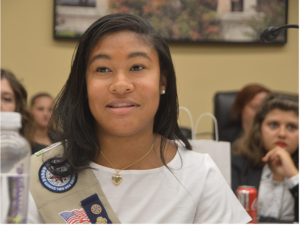
If it weren’t for teachers and mentors encouraging her to keep pursuing her passions, Karen St. Germain may have never become Director of Earth Sciences at NASA. Girl Scouts USA understands the importance of encouraging young girls to pursue STEM careers, so they created new badges in 2019 related to space science.
Episode: Karen St. Germain
Habitability and the Evolution of Life Under Our Magnetic Shield
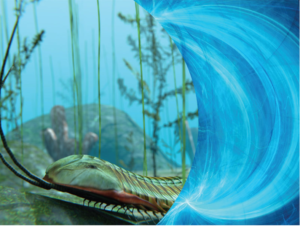
Sharmila Bhattacharya describes her job as the Program Director of Space Biology at NASA as “figuring out how to keep astronauts alive in space” (that’s wrong find the actual quote). One thing that keeps us safe here on Earth: the Earth’s magnetic field- but at the moment it is poorly understood. This Eos article discusses what we know about Earth’s magnetic field so far, and the implications it has on studying life on other planets.
Episode: Sharmila Bhattacharya
New Real-Time Model May Protect Astronauts from Space Radiation
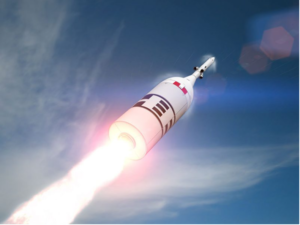
Sharmila Bhattacharya is the Program Director of Space Biology at NASA Headquarters. Here’s a project NASA has been conducting to see how much radiation astronauts are exposed to once they leave Earth’s magnetic field. This research could help them protect astronauts in the future on missions to the Moon and Mars.
https://eos.org/research-spotlights/new-real-time-model-may-protect-astronauts-from-space-radiation
Episode: Sharmila Bhattacharya
Tests Indicate Which Edible Plants Could Thrive on Mars
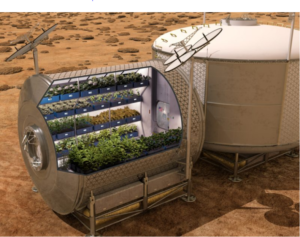
Sharmila Bhattacharya’s job as the Program Director of Space Biology at NASA is to figure out how to keep astronauts safe in space. Undergraduate students of Edward Guinan at Villanova University are studying similar things, as they work on figuring out which plants can survive on Mars.
Episode: Sharmila Bhattacharya
Can Microbes Survive Multiple Trips into the Stratosphere?
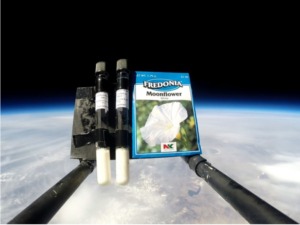
You don’t have to be the Program Director of Space Biology at NASA like Sharmila Bhattacharya to research how biological organisms survive in space. This Eos article highlights a group of high school students who sent microbes up into the atmosphere to potentially see how life on other planets survive in extreme conditions.
Episode: Sharmila Bhattacharya
Rafael Loureiro on Space Plants
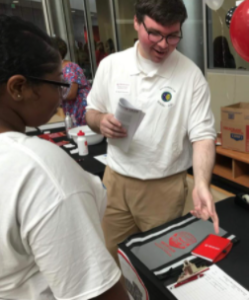
Sharmila Bhattacharya is the Program Director of Space Biology at NASA Headquarters. If you want to learn more about space biologists, check out this old Sci & Tell episode with Rafael Loureiro, a self-proclaimed “space botanist.”
Episode: Sharmila Bhattacharya
Third Pod Live: Anthony Rapp
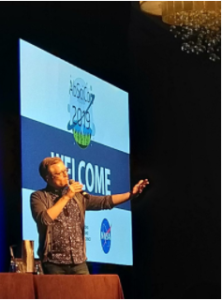
If Sharmila Bhattacharya wasn’t a scientist, she would’ve wanted to work in theatre- maybe she would’ve been telling science fiction stories! If you’re curious about the intersection of science and storytelling, check out this Third Pod episode with Star Trek Discovery actor Anthony Rapp, where he discusses how one portrays science on screen.
Episode: Sharmila Bhattacharya
AGU Sharing Science
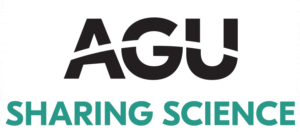
In her Sci & Tell episode, Sharmila Bhattacharya talks about the importance of science communications in helping people understand scientific data no matter what their background is. Need some help communicating your work to others? Check out AGU’s Sharing Science resources.
Episode: Sharmila Bhattacharya
Big Science, Small Package: The Joys of Writing Science for Kids
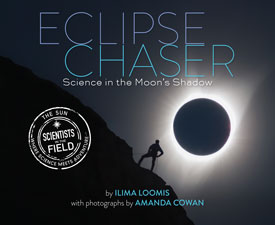
Sharmila Bhattacharya may be a scientist, but she also has a passion for writing and literature. Who says you can’t have both? Check out this Eos article about Ilima Loomis’s picture book Eclipse Chasers, where she explains solar physics to young audiences.
Episode: Sharmila Bhattacharya
Planetary Cave Exploration Progresses
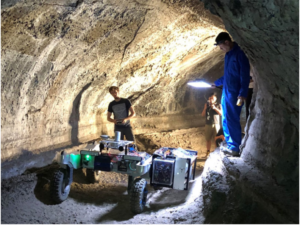
Sharmila Bhattacharya says her job @NASA is to figure out how to keep humans safe in space.
Scientists are studying caves on Earth to help with future cave exploration on other planets. Read more in this Eos article.Episode: Sharmila Bhattacharya
Perspectives on Parenting While Researching (During a Pandemic)
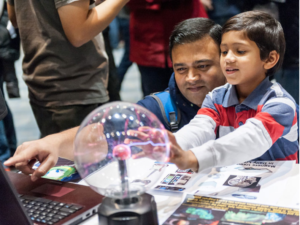
Sharmila Bhattacharya’s greatest achievement is raising her kid. It’s hard to do research and parent simultaneously, especially during a pandemic. Here are some thoughts in Eos on finding balance:
Episode: Sharmila Bhattacharya
Dune Universe Inspires Titan’s Nomenclature
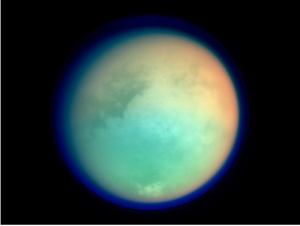
Although Sharmila Bhattacharya is a scientist, she’s also passionate about literature. She’s not the only one: this @NASA scientist named Titan’s plains after planets in the book Dune.
Episode: Sharmila Bhattacharya
A Successful Model for Interdisciplinary Research
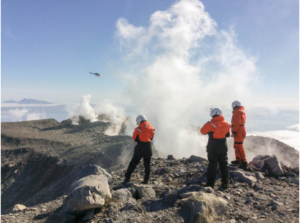
One of Sharmila Bhattacharya’s favorite things about being a scientist is working with people outside her field. To see what interdisciplinary research can yield, just check out @GeoPRISMS
Episode: Sharmila Bhattacharya
New Funding Fortifies Africa’s Great Green Wall

Sharmila Bhattacharya talks about the importance of funding science in her Sci & Tell episode. To see how much of an impact funding makes on science projects, just look at Africa’s Great Green Wall.
Episode: Sharmila Bhattacharya
Amoeba People Find a Niche for Nerdy Science Music

Sharmila Bhattacharya is able to combine her love for science and the humanities in her job @NASA. The band Amoeba People similarly combines their passions to make “nerdy science music.”
Episode: Sharmila Bhattacharya
Digging Deep into Geosciences with Minecraft
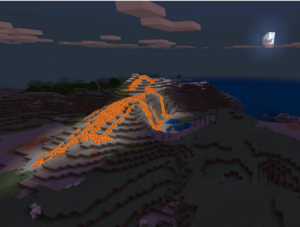
Melissa Scruggs is currently earning her PhD in volcanology. What if you could learn about volcanoes on Minecraft? Well, the Science Hunters are doing just that. Read about them in Eos:
Episode: Melissa Scruggs
Scientific Meetings for All
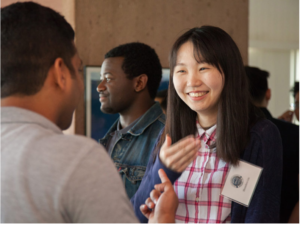
For single moms like Melissa Scruggs, lack of childcare makes it difficult for scientists to attend conferences. This Eos piece outlines ways to make scientific meetings more accessible:
Episode: Melissa Scruggs
Mt. St. Helens: 40 Years Later
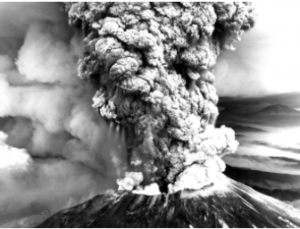
Melissa Scruggs is currently earning her Ph.D. in volcanology. One of the most famous volcanic eruptions was the eruption of Mt. St. Helens. We talked about its 40th anniversary on Third Pod:
Episode: Melissa Scruggs
Accessibility and Fieldwork in the Time of Coronavirus
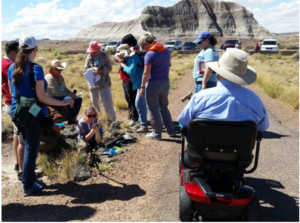
Melissa Scruggs took advantage of resources to improve her communication skills once she was diagnosed with autism. Accessibility is very important in STEM, as this Eos article explains:
Episode: Melissa Scruggs
Using Satellites and Supercomputers to Track Arctic Volcanoes
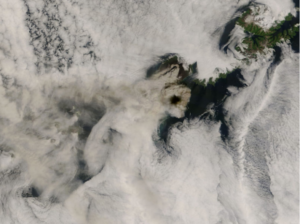
Want to learn more about volcanoes after listening Melissa Scrugg’s episode? Here’s an Eos article about how scientists use satellites and supercomputers to study Arctic volcanoes:
Episode: Melissa Scruggs
Escape from Thera

Melissa Scruggs is currently earning her Ph.D. in volcanology. What sorts of things do volcanologists study? Listen to this Third Pod episode with Krista Evans, who studies Thera’s volcano:
Episode: Melissa Scruggs
Deviations from the Norm

Melissa Scruggs is working on her Ph.D. in volcanology. Wonder what it’s like to work in some of the world’s harshest environments? We talked to 5 scientists about it in this Third Pod episode
Episode: Melissa Scruggs
Ancient Eruption May Change Our Understanding of Modern Volcanoes
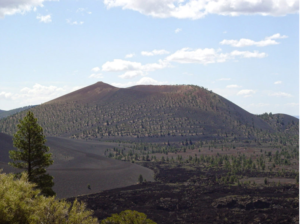
Want to learn more about volcanoes after hearing Melissa Scruggs’ Sci & Tell episode? Read this Eos article about how scientists are using a 1000-year-old eruption to study modern volcanoes:
Episode: Melissa Scruggs
Instruments of Unusual Size
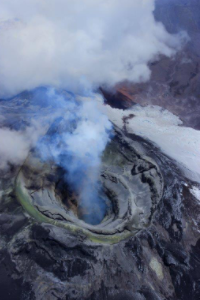
Melissa Scruggs is currently earning her Ph.D. in volcanology. What do we know about volcanoes so far? Check out this Third Pod episode w/ Jeffrey Johnson, who studies the sounds from volcanoes:
Episode: Melissa Scruggs
Scientists Brew Lava to Better Understand Volcanoes
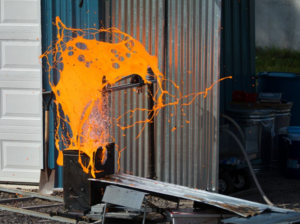
Some volcanologists like Melissa Scruggs visit volcanoes to study lava- others make their own lava! Check out this Eos article to learn more:
Episode: Melissa Scruggs
Et tu, Etna?

Like Melissa Scruggs, we here AGU think volcanoes are pretty cool! On Third Pod we talked about the interesting connection between Mt. Etna’s eruption and Julius Caesar’s assassination:
Episode: Melissa Scruggs
Two Active Volcanoes in Japan May Share a Magma Source

Want to learn more about volcanoes after listening to Melissa Scruggs’ Sci & Tell episode? Check out this Eos article about two volcanoes in Japan that might share a magma source:
Episode: Melissa Scruggs
Volcano Disaster Prepping

Melissa Scruggs is currently earning her Ph.D. in volcanology. What do volcanologists do when they know a volcano is about to explode? We talked to John Ewert about this on Third Pod:
Episode: Melissa Scruggs
Special Release: Hawaii’s Volcanoes, Water, and…Vog?
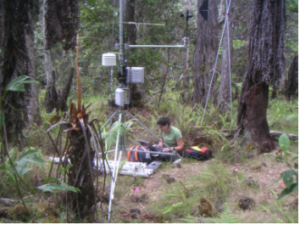
Wonder what it’s like to work as a volcanologist like Melissa Scruggs? In this Third Pod episode we talked to Kate Brauman about her work studying Hawaii’s volcanoes:
Episode: Melissa Scruggs
The Overlooked Role of Sulfur Dioxide Emissions from Volcanoes
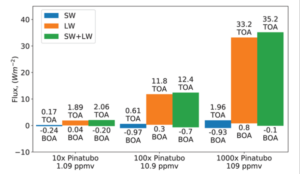
Want to learn more about volcanoes after listening to Melissa Scruggs’ Sci & Tell episode? Recent studies show that sulfur dioxide emissions from volcanoes can both cool and warm the atmosphere:
Episode: Melissa Scruggs
Caregiver Awards Support Early-Career Researchers
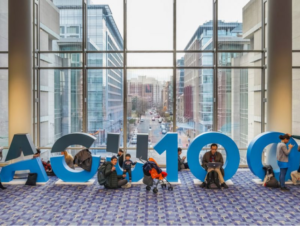
Melissa Scruggs has been in school for her teenage daughter’s entire life. The Early Career Caregiver award was created to give childcare support to early-career scientists:
Episode: Melissa Scruggs
Drones Swoop in to Measure Gas Belched from Volcanoes
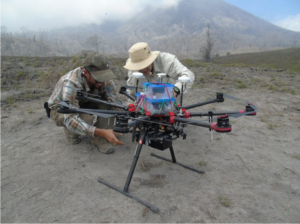
Want to learn more about volcanoes after listening Melissa Scruggs’ Sci & Tell episode? Read about a team of scientists using drones to study volcanoes in Central America:
Episode: Melissa Scruggs
Using Big Data to Measure Environmental Inclusivity in Cities
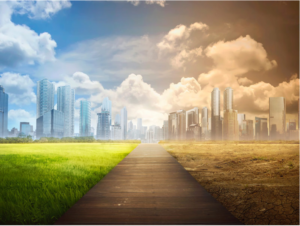
Mónica Feliú-Mójer uses science communications to promote equity and inclusivity. Historically, low-income urban communities bear the brunt of climate change- but scientists are working to change that:
Episode: Mónica Feliú-Mójer
Careers in Community Science

Mónica Feliú-Mójer’s work in science communications is grounded in her Puerto Rican community. At AGU, we call this approach to science “community science.” Read more about what that is here:
Episode: Mónica Feliú-Mójer
Puerto Rico Adapts to a Changing, Challenging Environment
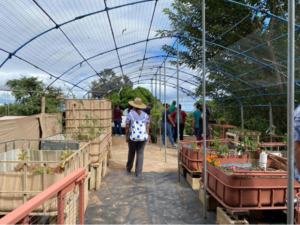
One of Mónica Feliú-Mójer’s main goals is to share Puerto Rican science with people around the world. Eos recently highlighted the work Puerto Rico is doing to minimize the effects of climate change:
Episode: Mónica Feliú-Mójer
A Tried-and-True Medium to Broaden the Reach of Science
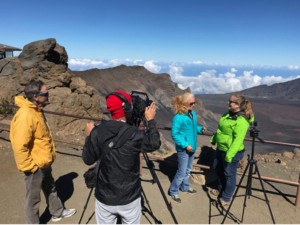
Scientists like Mónica Feliú-Mójer use science communications to promote equity & inclusivity. Recently, a group of geoscience researchers created a TV show to teach science to those who don’t have internet:
Episode: Mónica Feliú-Mójer
Navigating Graduate School and Beyond: A Career Guide for Graduate Students and a Must Read for Every Advisor
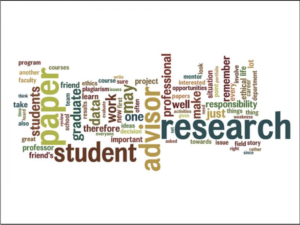
Mónica Feliú-Mójer explained in her Sci & Tell episode that grad school has “hidden rules” that only those who were clued into them would know about. This Eos article helps decode some of those rules:
Episode: Mónica Feliú-Mójer
Third Pod Presents: Sci & Tell – Kim Cobb, Standing Up for Women in Science
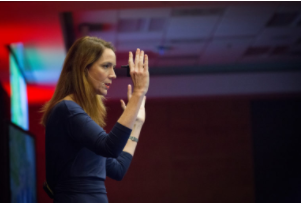
Mónica Feliú-Mójer uses science communications to help promote equity & inclusivity. In a previous Sci & Tell episode, we talked to Kim Cobb about working to promote equity for women in STEM at Georgia Tech:
Episode: Mónica Feliú-Mójer
Sharing Data Helps Puerto Ricans Rebound After Hurricane Maria
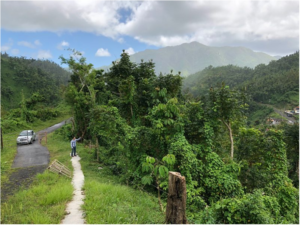
Mónica Feliú-Mójer and others are working to make sure Puerto Ricans have access to and understand the science that affects their daily lives. Read about a software that does this in Eos:
Episode: Mónica Feliú-Mójer
Thriving Earth Exchange
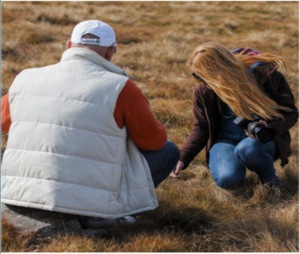
Mónica Feliú-Mójer’s work in science communications is grounded in her Puerto Rican community. At AGU, we call this approach to science “community science,” and we launched the Thriving Earth Exchange to support those projects:
Episode: Mónica Feliú-Mójer
Pulwarty & Hayes, Connecting Science & Society

Mónica Feliú-Mójer works science communications, a field that aims to help non-STEM people understand science. Last year, Sci & Tell interviewed two other science communicators, Michael Hayes and Roger Pulwarty:
Episode: Mónica Feliú-Mójer
A Pandemic Pivot in Earth Science Outreach and Education

Mónica Feliú-Mójer uses science communications to help promote equity and inclusivity. When the pandemic hit, STEM educators rethought accessibility so they could reach students from all different backgrounds:
Episode: Mónica Feliú-Mójer
Plain Language Summaries Explained in Plain Language
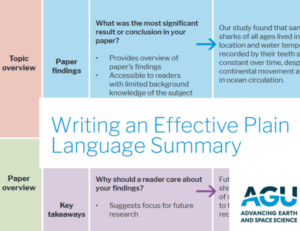
Mónica Feliú-Mójer uses science communications to help demystify science to a non-STEM audience. A few years ago, AGU started an initiative to add a Plain Language Summary to journal articles:
Episode: Mónica Feliú-Mójer
Eos Nov-Dec 2020: Reimagining the Geosciences

Mónica Feliú-Mójer uses science communications to help promote equity and inclusivity. Check out the Nov-Dec 2020 issue of Eos, which looks at ways to diversify the geosciences:
Episode: Mónica Feliú-Mójer
Voices for Science

Melissa Scruggs, who we interviewed for Sci & Tell, is also a Voices For Science advocate!
Learn more about the science communications program here:Episode: Melissa Scruggs
Promoting the Universal Language of Science: Translating Congo Research

Mónica Feliú-Mójer uses science communications to help make STEM accessible to Puerto Ricans- so she often works in Spanish. Read about scientists working to remove language barriers in the Congo in Eos:
Episode: Mónica Feliú-Mójer
Hubble Turns 25

Before Ed Weiler became the Associate Administrator at NASA, he was the chief scientist on the Hubble Telescope.
Check out this Eos article from 2015 celebrating the Hubble’s 25th anniversary:
Episode: Ed Weiler
An Underwater Telescope to Study Sky and Sea
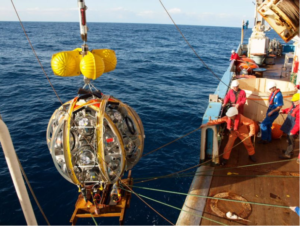
You’ve heard of telescopes in space-Ed Weiler has worked on a few of them- but have you heard of a telescope under the sea?
Check out this Eos article about an underwater telescope:
Episode: Ed Weiler
From Athlete to Astronaut
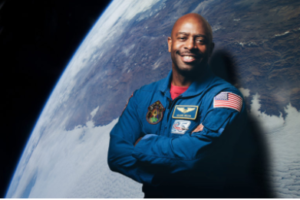
Although Ed Weiler wasn’t an astronaut, he certainly helped many of them go to space.
Check out this Third Pod interview from last year with Leland Melvin- who’s an athlete turned astronaut!
Episode: Ed Weiler
New Space Telescope Named for Nancy Roman, Astronomy Pioneer
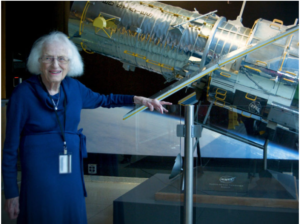
Ed Weiler was first hired at NASA by legendary scientist Nancy Grace Roman.
Last year, NASA honored Nancy by naming a space telescope after her:
Episode: Ed Weiler
Training and Diversifying Space Project Principal Investigators
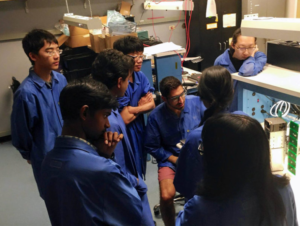
Want to be a leader at NASA like Ed Weiler was?
Check out this Eos article about how NASA is working to diversify their leadership team:
Episode: Ed Weiler
Final Mirror Segment Added to Powerful Future Space Observatory
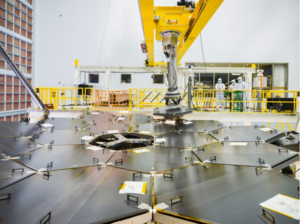
In his Sci & Tell episode, Ed Weiler described a very public struggle his team faced at NASA while installing the Hubble’s mirrors.
Luckily, the process went much more smoothly on the James Webb:
Episode: Ed Weiler
Final Frontier? The Evolution of Planetary Science Missions

Ed Weiler worked on many projects throughout his career at NASA.
Fran Baganel did too, and she discussed them with us on this Third Pod episode:
Episode: Ed Weiler
Capturing Pluto’s Heartbeat in a Computer
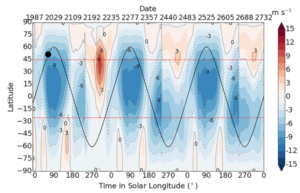
One of the projects Ed Weiler worked on while at NASA was the New Horizons telescope.
Read about some of the data New Horizons collected on Pluto in Eos:
Episode: Ed Weiler
The Unexpected Benefits of Science Communication Training
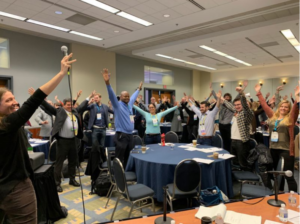
One of Ed Weiler’s proudest moments at NASA was implementing a public outreach program for both adults and kids.
Science communications not only benefits the public- it helps the scientists as well:
Episode: Ed Weiler
New Horizons Sends First Looks of 2014 MU69
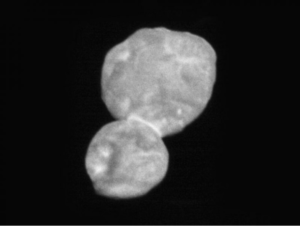
One of the projects Ed Weiler worked on while at NASA was the New Horizons telescope.
Check out this Eos article about when New Horizons sent us the first look of MU69:
Episode: Ed Weiler
Five Spitzer Discoveries About Solar Systems Near and Far
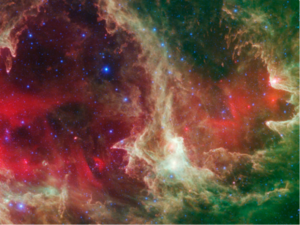
Ed Weiler is probably best known for working on the Hubble Telescope.
Last year, at NASA retired another one of its telescopes, the Spitzer, which helped us learn a lot about our solar system:
Episode: Ed Weiler
How Teachers Can Empower the Climate Generation
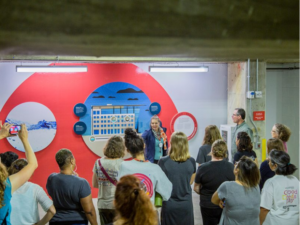
Ed Weiler spent a lot of time at NASA helping kids understand STEM.
Check out this Eos article from 2019 about how K-12 educators incorporated climate change education into their curriculums:
Episode: Ed Weiler
New Book Conveys Details and Flavor of First Mission to Pluto

One of the projects Ed Weiler worked on while at NASA was the New Horizons telescope.
Read about this book which details the New Horizons project from the inside:
Episode: Ed Weiler
New Earth Orbiter Provides a Sharper Look at a Changing Planet
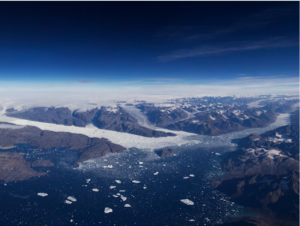
Ed Weiler was basically in charge of all science when he was an Associate Administrator at NASA.
One of NASA’s big projects is ICESat. Here are some things we’ve learned from the ICESat-2:
Episode: Ed Weiler
Why Trillions of Jellyfish Washed Ashore from Canada to California
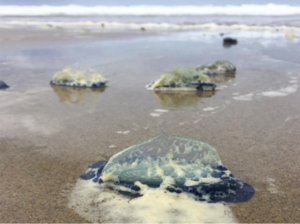
Prosanta Chakrabarty studies ichthyology, specifically fishes & evolution.
This Eos article talks about how climate change is causing jellyfish to wash up on beaches:
Episode: Prosanta Chakrabarty
Mythical Monsters and their Real-life Inspirations
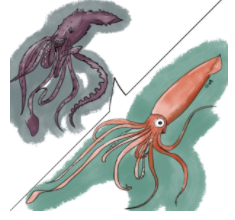
Some of the fishes Prosanta Chakrabarty discovers seem like they belong in a fairy tale.
This Third Pod episode talks about how some mythical creatures are inspired by real animals (check out part 1 too):
Episode: Prosanta Chakrabarty
How Well Can the Webb Telescope Detect Signs of Exoplanet Life?
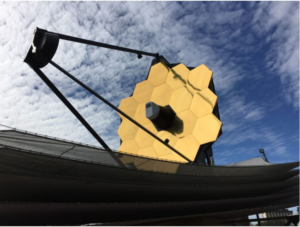
John Mather is currently preparing for the launch of the James Webb Space Telescope later this year.
James Webb is super powerful, but can it detect oxygen on other planets?
Episode: John Mather
How River Capture Affects the Evolution of Aquatic Organisms
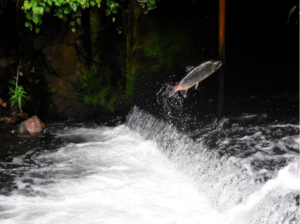
Prosanta Chakrabarty is a professor & researcher who focuses on fishes & their evolution.
Check out this Eos article about how geologically active areas on Earth spawn more species diversity:
Episode: Prosanta Chakrabarty
Fieldwork in the Experimental Lakes Area Adapts to COVID-19
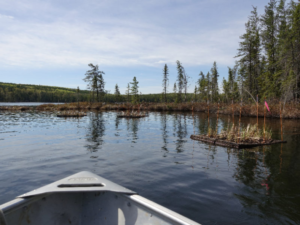
Like most people, Prosanta Chakrabarty had to adapt his fieldwork because of the pandemic.
Read about how researchers working at @IISD_ELA adapted their fieldwork:
Episode: Prosanta Chakrabarty
Damselfish in Distress?
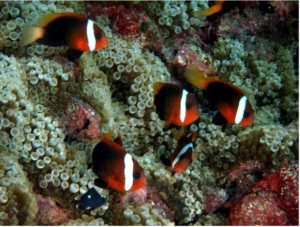
Prosanta Chakrabarty studies ichthyology, specifically fishes & evolution.
This Eos article discusses how boat noise pollution is affecting the evolution of damselfish:
Episode: Prosanta Chakrabarty
Global Warming Hits Marine Life Hardest
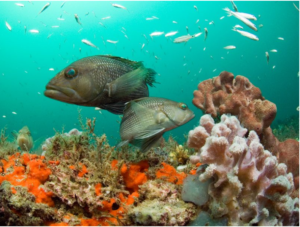
Prosanta Chakrabarty studies ichthyology, specifically fishes & evolution.
Check out this Eos article about which sea creatures might- or might not- survive global warming:
Episode: Prosanta Chakrabarty
Fish Continued to Spawn as Hurricane Harvey Swirled Overhead
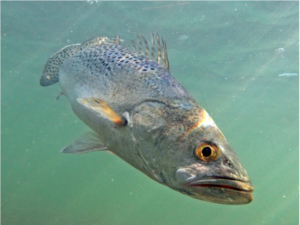
Sometimes fishes can surprise us- just ask Prosanta Chakrabarty.
This Eos article is about how scientists found out that fish continue to spawn in the middle of a hurricane:
Episode: Prosanta Chakrabarty
Sinking Fish May Fast-Track Mercury Pollution to the Deep Sea
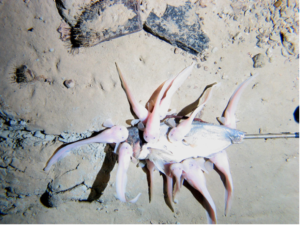
Prosanta Chakrabarty studies ichthyology, specifically fishes & evolution.
Read about how dead fish are carrying mercury pollution to the bottom of the ocean, which is affecting evolution:
Episode: Prosanta Chakrabarty
AGU Student Travel Grants Help Underrepresented Groups
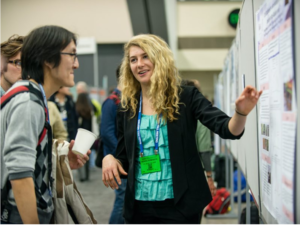
Prosanta Chakrabarty hopes that the future of science will benefit from the knowledge of people traditionally underrepresented in STEM.
AGU provides grants for them to attend Fall Meeting:
Episode: Prosanta Chakrabarty
Final Frontier? The Evolution of Planetary Science Missions

John Mather has a pretty cool career trajectory at NASA- he even won a Nobel for it!
Fran Bagenal had a cool career at NASA too- listen to Third Pod to see:
Episode: John Mather
Teaching the Art and Science of Getting Research Funding
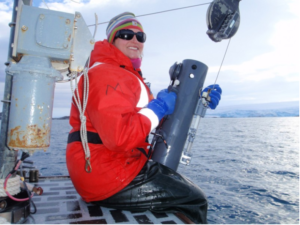
Getting funding for a research project is hard- just ask John Mather.
Here’s a nifty guide from Eos to help secure the funding you need:
Episode: John Mather
Webb Telescope May Detect Minerals from Shredded Worlds
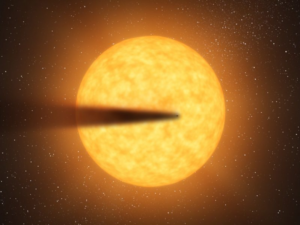
John Mather is senior scientist on the James Webb Space Telescope at NASA, set to launch later this year.
How powerful is James Webb? Powerful enough to detect minerals from vaporized exoplanets!
Episode: John Mather
NASA scientist Jim Green on space exploration
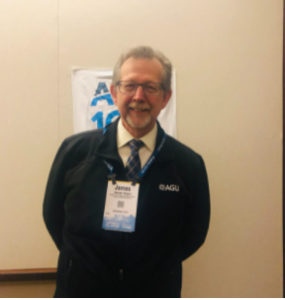
John Mather is one of the latest NASA scientist we interviewed on Sci & Tell.
Our very first episode was with an awesome NASA scientist too- we talked to Jim Green, who’s the current Chief Scientist:
Episode: John Mather
Physics Nobel Winners Also Solved Solar Mystery
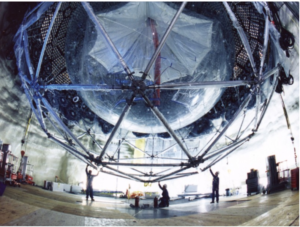
In 2006, John Mather won the Nobel for mapping the Big Bang.
More recently, two physicists won the Nobel Prize in Physics for discovering that neutrinos can change from one form to another:
Episode: John Mather
Gazing Toward the Universe’s Edge: Hubble’s Deep Field Legacy

The James Webb Space Telescope is supposedly more powerful than the Hubble.
Which is impressive considering the Hubble took pics of the birth of galaxies:
Episode: John Mather
Final Mirror Segment Added to Powerful Future Space Observatory

John Mather is currently senior scientist on the James Webb Space Telescope, set to launch later this year.
Check out this Eos article about some of the key features of the telescope:
Episode: John Mather
Imagers Seek Big Bang Signatures, Also Find Gravity Wave Effects
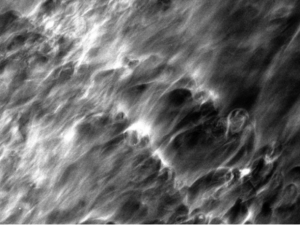
John Mather won the Nobel for mapping the Big Bang, which he did by sending a balloon into the atmosphere to measure Big Bang radiation.
Years later, check out how far that research has gone:Episode: John Mather
A Novel Approach to a Satellite Mission’s Science Team

John Mather is currently senior scientist on the James Webb Space Telescope, NASA’s biggest project in recent times.
Another big project NASA is working on- the PACE mission:
Episode: John Mather
Worlds Premiere

Excited about the launch of the James Webb Space Telescope? John Mather is….and so is Eos!
The latest issue of Eos is all about the James Webb- check it out!
Episode: John Mather
Balloon Launches Introduce Students to Space Science
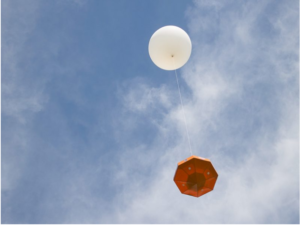
You don’t have to wait until grad school to launch a balloon that conducts research, like John Mather did.
Check out this Eos article about high school students who accomplished it!
Episode: John Mather
Specifically Tailored Action Plans Combat Heat Waves in India

Saleh Ahmed researches climate change in coastal Bangladesh and India.
India has been facing unprecedented heat waves over the past decade, and one city decided to take action:
Episode: Saleh Ahmed
Exploring Venus by Balloon
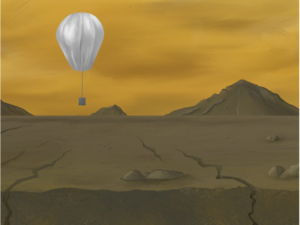
John Mather used a balloon to map the radiation from the Big Bang.
More recently, scientists are using balloons to explore Venus:
Episode: John Mather
Guardian of the Moon Rocks
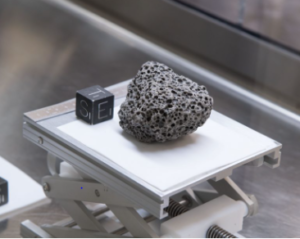
John Mather’s map of the Big Bang has spawned countless new discoveries from planetary scientists.
The moon landing has also influenced research today. We reflected on it on Third Pod:
https://thirdpodfromthesun.com/2019/07/15/centennial-e8-guardian-of-the-moon-rocks/
Episode: John Mather
Ballooning on Venus
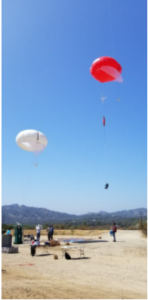
John Mather mapped the Big Bang by sending a balloon into the atmosphere to measure Big Bang radiation.
Check out this Third Pod episode about scientists using balloons to study Venus:
Episode: John Mather
Is Your Home at Risk of Experiencing a Natural Disaster?

Saleh Ahmed studies natural hazards in Bangladesh and the US- learn more in his Sci & Tell episode.
Are you at risk of facing a natural disaster? Find out in this Eos article:
Episode: Saleh Ahmed
What Five Graphs from the U.N. Climate Report Reveal About Our Path to Halting Climate Change
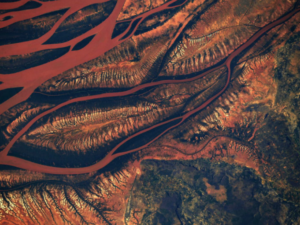
Saleh Ahmed researches climate change in South Asia and the US. Listen to his Sci & Tell episode for more.
The recent IPCC report highlighted just how urgent climate reform is. Eos provides a summary of the report here:
Episode: Saleh Ahmed
When the Sahara was Green
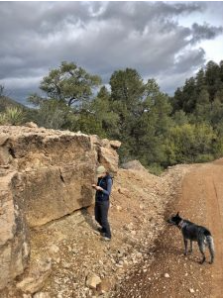
Saleh Ahmed studies climate change in South Asia and the US. Listen to his Sci & Tell episode for more.
How important is climate change? Well, did you know the Sahara Desert was once green…
Episode: Saleh Ahmed
The Wicked Problem of Earthquake Hazard in Developing Countries
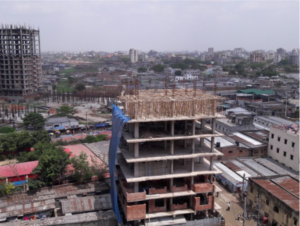
Saleh Ahmed researches natural hazards in Bangladesh.
Bangladesh is an earthquake-prone country, but without crucial information it’s difficult for them to prepare for disaster:
Episode: Saleh Ahmed
When Climate Adaptation Intervention Risks Further Marginalization
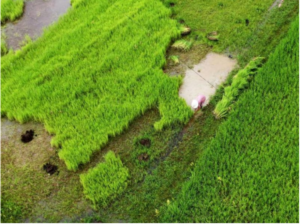
Saleh Ahmed is working on bringing equity to climate research and justice. Learn more in his Sci & Tell episode.
Even solutions to climate change are affecting marginalized communities- read about it in Eos:
Episode: Saleh Ahmed
Need for Rational Thinking for Predicting Floods and Droughts
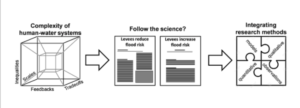
Saleh Ahmed studies climate change in South Asia and the US.
When mitigating climate change, it’s important to take an interdisciplinary route- this Eos article highlights a paper that elaborates:
https://eos.org/editor-highlights/need-for-rational-thinking-for-predicting-floods-and-droughts
Episode: Saleh Ahmed
Building Resilience in Rural America

Part of Saleh Ahmed’s research is studying how climate change is affecting rural America. You can learn more in his Sci & Tell episode.
So how is rural America dealing with the effects of climate change? Find out in this Eos article:
Episode: Saleh Ahmed
Special Release: Climate change, tree rings, and string theory
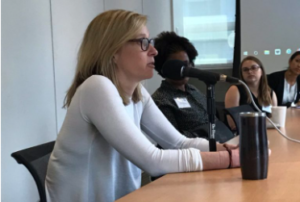
Saleh Ahmed is a climate scientist and Voices for Science Advocate. Kate Marvel is as well, and we got to interview her on Third Pod last year:
Episode: Saleh Ahmed
Human Activity Makes India’s Coastlines More Vulnerable
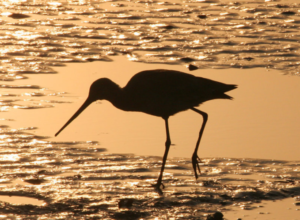
Saleh Ahmed researches climate change in coastal Bangladesh and India. Listen to his Sci & Tell episode for more.
This article in the March 2021 Eos issue talks about how human activity is affecting India’s coastlines:Episode: Saleh Ahmed
Eos March 2021: Before and After the Disaster
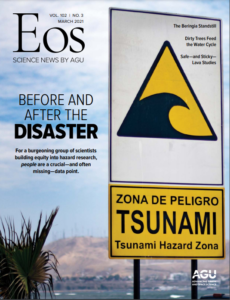
Saleh Ahmed is working on bringing equity to natural hazards research. So are other scientists- in fact, the March 2021 Eos issue is all about that:
Episode: Saleh Ahmed
The unusual relationship between climate and pandemics

Saleh Ahmed studies the effects of climate change in South Asia and the US. You can learn more in his Sci & Tell episode.
Did you know climate change can also affect pandemics (😐)? Check out this Third Pod episode for more:Episode: Saleh Ahmed
Advances in Satellite Data for Wildfire Smoke Forecasting
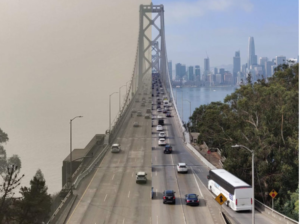
Karen St. Germain talks about how the Earth Sciences division at NASA uses satellites to collect data about the Earth. But what kind of information can we get about Earth from satellites? This Eos article explains the importance of satellite data in wildfire smoke forecasting.
Episode: Karen St. Germain
